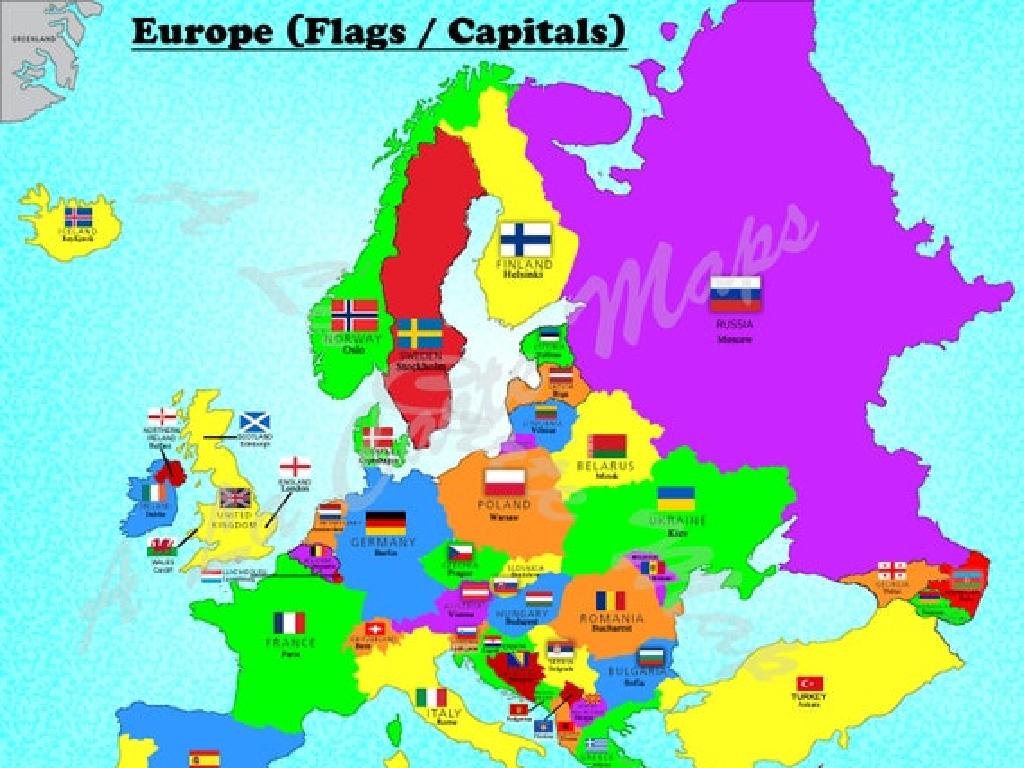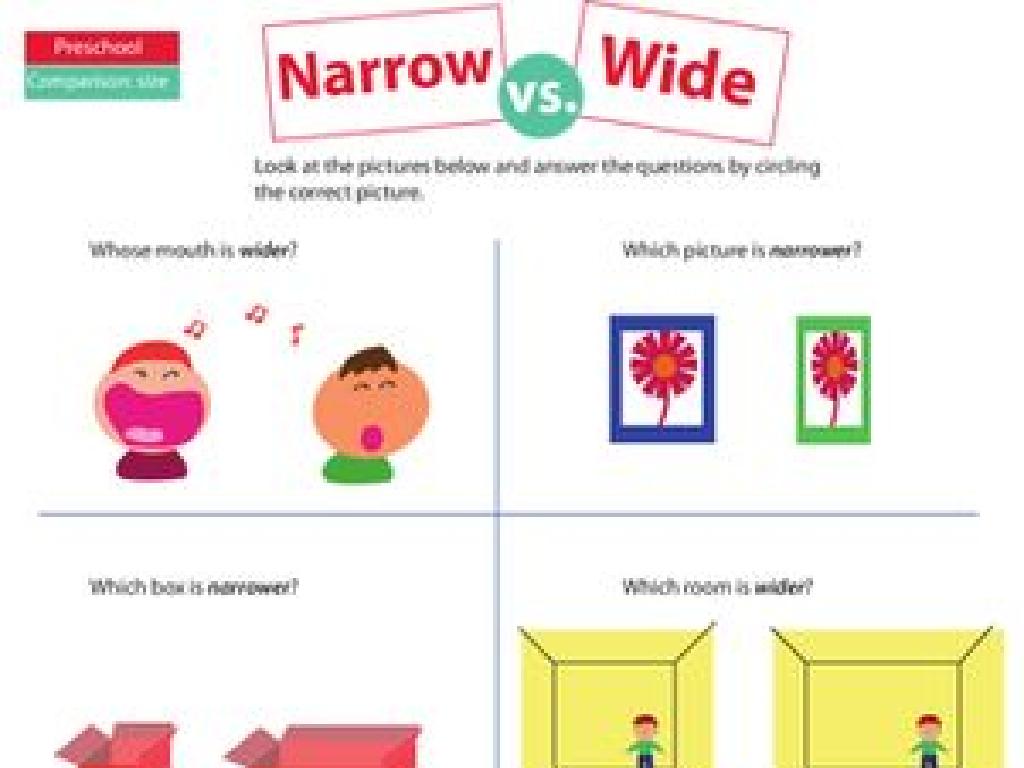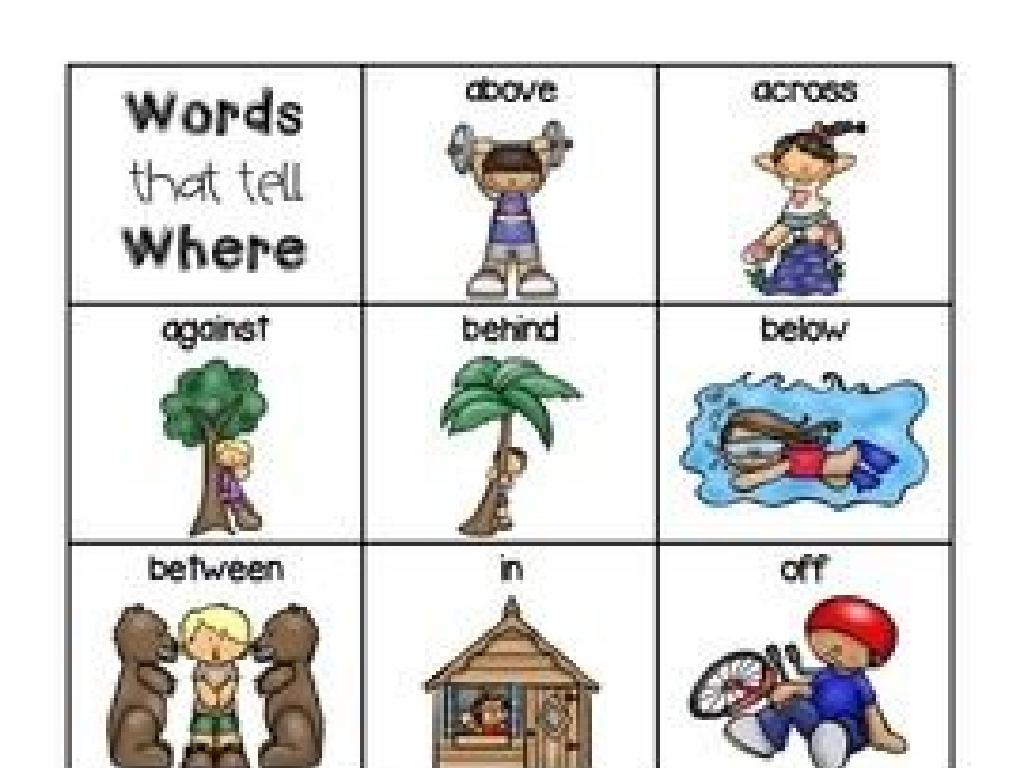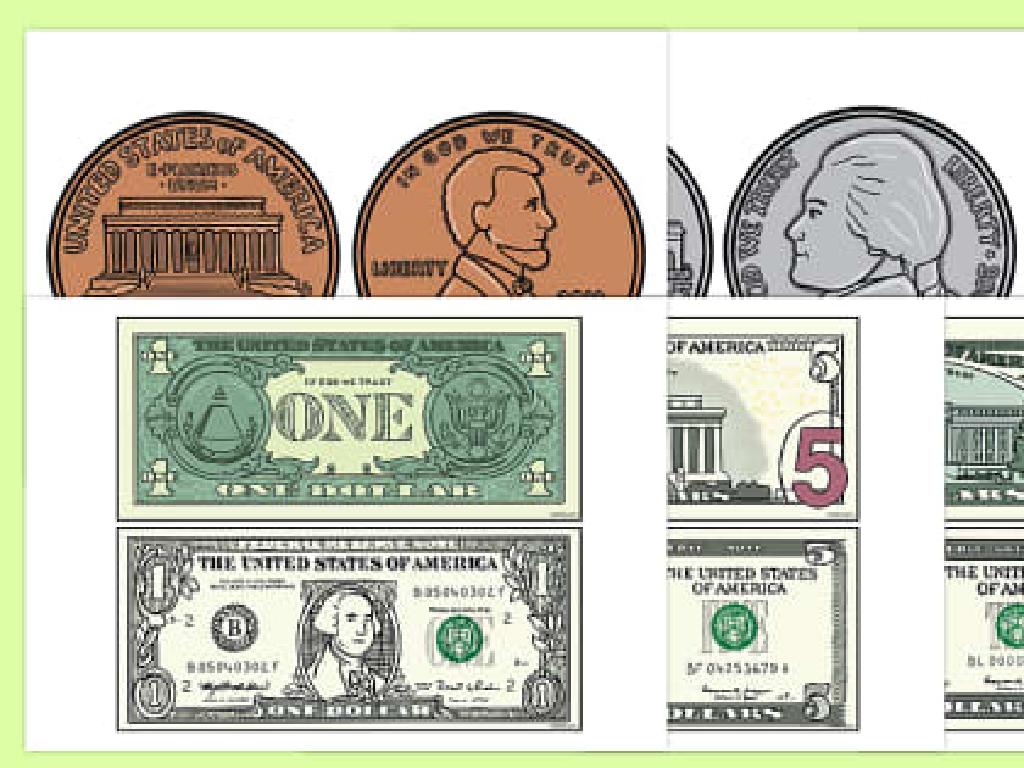Classify Polygons: Up To 12 Sides
Subject: Math
Grade: Second grade
Topic: Two-Dimensional Shapes
Please LOG IN to download the presentation. Access is available to registered users only.
View More Content
Exploring Polygons in 2D Shapes
– What is a polygon?
– A shape with straight lines and no curves
– Discover 2D shapes
– Flat shapes like squares and triangles
– Counting sides and corners
– Each shape has a different number of sides and corners
– Polygons up to 12 sides
– From triangles (3 sides) to dodecagons (12 sides)
|
This slide introduces second graders to the concept of polygons within the topic of two-dimensional shapes. Begin by defining a polygon as a flat shape with straight sides that are fully closed. Then, discuss various 2D shapes that the students may already be familiar with, such as squares and triangles, and explain that these are all polygons. Move on to an interactive activity where students count the sides and corners of different shapes to help them understand these properties. Finally, explain that polygons can have up to 12 sides, and give examples of each, starting from a triangle (3 sides) to a dodecagon (12 sides). The goal is to make students comfortable with identifying and classifying polygons by the number of sides and corners they have.
Exploring Polygons
– Polygons: flat shapes with straight sides
– Like a piece of paper with drawn lines that connect back to start
– Edges: the straight sides of polygons
– The lines you draw are the edges of the shape
– Vertices: corners where edges meet
– Where two lines meet, that’s a vertex
– Counting edges and vertices
– Practice by counting them on different polygons
|
Introduce the concept of polygons by explaining that they are like drawings on a flat piece of paper where the lines connect back to the starting point without crossing over. Emphasize that the lines are called edges and the points where they meet are vertices. Use simple, everyday language and examples to make the concept relatable for second graders. Encourage students to draw their own polygons and count the edges and vertices to reinforce the lesson. Provide a variety of shapes for them to practice with, ensuring they understand that every closed shape with straight sides is a polygon, regardless of the number of sides.
Exploring Polygons: Shapes with Many Sides!
– Triangles: A shape with 3 sides
– Think of a triangle as a slice of pizza
– Quadrilaterals: A shape with 4 sides
– Like a square or a rectangle
– Pentagons: A shape with 5 sides
– Like the home plate in baseball
– More Polygons: Up to 12 sides
|
This slide introduces students to the concept of polygons, starting with the most basic shapes and building up to more complex ones. Emphasize that polygons are 2-dimensional shapes with straight sides. Use relatable examples to help them visualize each type of polygon: a triangle can be seen as a slice of pizza, a quadrilateral could be their classroom’s door, and a pentagon like a home plate in baseball. Explain that polygons can have up to 12 sides, and each has its own name. Encourage students to look for these shapes in their environment to better understand and remember them.
Counting Sides and Vertices of Polygons
– Learn to count polygon sides
– Understand what vertices are
– Vertices are where two sides meet, like corners
– Interactive counting activity
– Use shapes to count sides and vertices
– Share findings with the class
|
This slide introduces the concept of counting sides and vertices on polygons, which is fundamental in classifying them. Begin by explaining that the sides are the straight lines that make up the shape, and vertices are the points where two sides meet. During the interactive activity, provide students with various polygon cut-outs and have them count the sides and vertices. This hands-on approach helps solidify their understanding. After the activity, encourage students to share their findings to ensure they can identify and count sides and vertices correctly. Possible activities include counting sides and vertices on paper shapes, using manipulatives like sticks and clay to form vertices, or drawing shapes on the board for the class to count together.
Naming Polygons: Up to 12 Sides
– Polygons have special names
– Names based on number of sides
– Learn names up to 12-sided shapes
– Triangle (3), Quadrilateral (4), Pentagon (5), Hexagon (6), Heptagon (7), Octagon (8), Nonagon (9), Decagon (10), Hendecagon (11), Dodecagon (12)
– Practice naming polygons
– We’ll draw and name polygons together!
|
This slide introduces students to the concept that polygons are named according to the number of sides they have. Start by explaining what a polygon is and then move on to the specific names for polygons with up to 12 sides. Use visual aids like flashcards or shapes to help students memorize the names. Engage the class by drawing different polygons on the board and having students name them. For homework, students can draw their own polygons and label them. This activity will help reinforce their understanding of the names and characteristics of polygons.
Regular vs. Irregular Polygons
– What are Regular Polygons?
– All sides and angles are equal
– Examples: square, equilateral triangle
– What are Irregular Polygons?
– Sides and angles are not all the same
– Examples: rectangle (sides), scalene triangle (angles)
|
This slide introduces the concept of regular and irregular polygons to second-grade students. Regular polygons are shapes with all sides and angles of equal length and measure, such as squares and equilateral triangles. Irregular polygons have sides and angles that are not all the same, like rectangles and scalene triangles. Use simple, familiar shapes to help students understand the difference. During the presentation, show various examples of both regular and irregular polygons and have students classify them. Encourage students to draw their own examples and to look for these shapes in their environment.
Polygons Around Us
– Polygons in the classroom
– Clocks as polygons
– A clock is often a circle, a type of polygon
– Signs shaped like polygons
– Stop signs are octagons, another polygon
– Tables with polygonal tops
– Many tables have square or rectangular tops
|
This slide aims to help students recognize and classify polygons by observing everyday objects in their classroom. A polygon is a flat shape with straight sides. Encourage the students to look around and identify items that have different polygon shapes. For example, a clock is usually circular, which is a type of polygon; stop signs are shaped like octagons, which have eight sides; and tables often have square or rectangular tops. This activity will help students understand that polygons are not just mathematical concepts but are also present in real life, enhancing their ability to recognize and classify shapes. Have the students draw or list items they find and discuss the number of sides each polygon has.
Class Activity: Polygon Hunt
– Explore the classroom on a polygon hunt
– Match objects to polygon shapes
– Look for triangles, rectangles, and other polygons
– Draw the polygons you find
– Use your worksheet to sketch the shapes
– Share your findings with the class
|
This interactive activity is designed to help students recognize and classify polygons in their environment. Encourage the children to search for real-life examples of polygons such as a clock (circle), door (rectangle), or a sign (octagon). Provide them with a worksheet that has the names and pictures of polygons up to 12 sides to assist them in matching the objects they find. After the hunt, have the students draw the shapes they found on their worksheet, reinforcing their understanding of the shapes. Conclude the activity with a discussion allowing students to share their findings and reflect on the variety of polygons around them. This will help solidify their knowledge of two-dimensional shapes and how they appear in everyday objects.
Polygon Review: Great Job!
– Congrats on learning polygons!
– Recall names and side counts
– Triangles have 3, rectangles have 4 sides, and so on.
– Spot polygons in daily life
– Maybe your table is a rectangle or your clock is a circle!
– Keep practicing polygon ID
|
This slide is a wrap-up of our lesson on polygons, designed to reinforce the key points. Encourage the students to be proud of what they’ve learned about the different types of polygons and their characteristics. Remind them to remember the names and the number of sides for each shape, from triangles up to dodecagons. Encourage them to keep an eye out for these shapes in their environment, which will help solidify their understanding. As a fun homework task, ask them to draw or list polygons they find at home or on their way to school. This will help them connect classroom learning with the real world.





